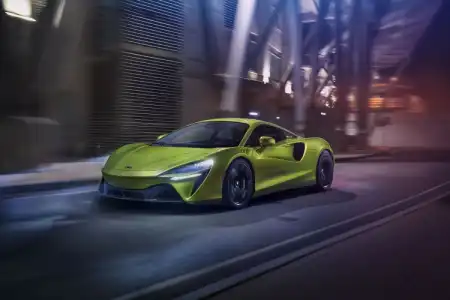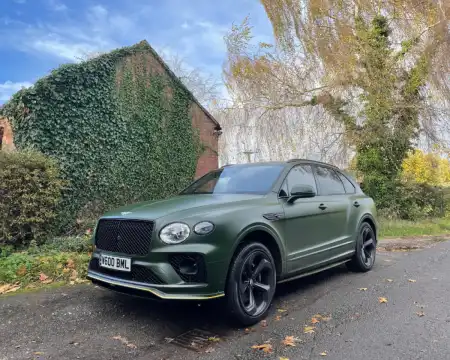- Princely looks
- Beautiful sound
- Wonderful to drive
- Not a true four-seater – lacks rear space
- It would be great if it were less costly to run
- A V12 option would still be appreciated
Introduction
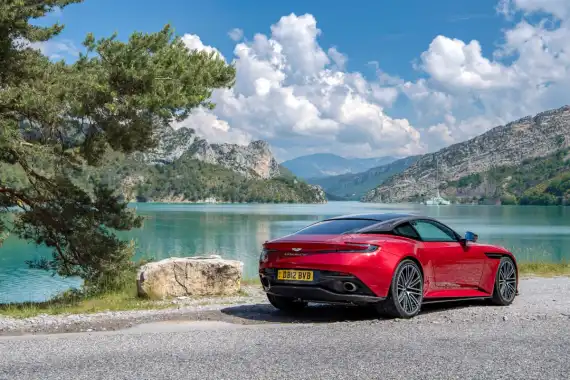
As a lifelong enthusiast of sports cars, the opportunity to have a career involving them is nothing other than living a dream, writes Tim Barnes-Clay. If I could travel back in time to 1980s Norwich and inform my younger self that I would be living this reality as an adult, I would be amazed. And yet, here I am, living life in the fast lane of freelance car writing.
It may not be the best-paid job in the world, but the opportunity to get up close and personal with these incredible machines more than compensates for that. These thrill rides have a lot more to offer than any run-of-the-mill job at Norwich Union – as it was called back in the day.
Today, I want to talk about my latest drive – in none other than the mind-blowing Aston Martin DB12. The automaker describes the DB12 as a car representing a "quantum leap in sporting demeanour and dynamic capability." That's strong stuff.
The brand is calling this Grand Tourer the world's first Super Tourer. This harmonious blend achieves the power and comfort needed for drives across continents without sacrificing the sophistication and agility associated with a supercar. To back up this claim, the DB12 houses a bunch of upgrades that differentiate it from its predecessor, the DB11.
The car also boasts a set of driving modes, including GT, Sport, and Sport Plus - familiar territory from the DB11 - along with Wet and Individual modes. But what's particularly exciting is that these driving settings are significantly more extreme than those you'll experience in the DB11.
That means you can have the best of both worlds, switching between a GT car's comfort and a true supercar's heart-thumping performance. And an aside regarding nomenclature, Aston Martin's decision to name the DB12 is noteworthy, considering the history of the DB line. The automaker skipped from the DB8 to the DB9, fearing that the "8" would be misread to indicate that it has a V8 engine instead of its V12. A bitter irony: the DB12 is only available in a V8.
In short, this Aston Martin is more than just a sports car; it's a declaration of intent of what the marque wants to do in today's competitive environment. With its performance and luxurious nature, it pretty much redefines what a Super Tourer is all about.
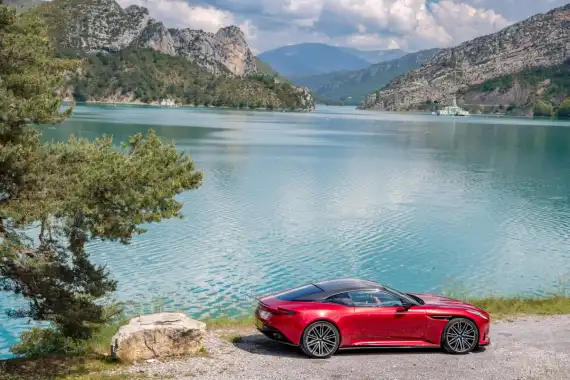
The car is wider in track than the DB11 and, as is now the standard on Astons, has a broader grille that dominates the front end even more than it did before, partly to aid cooling. Some swooping bodywork to either side also creates large air intakes, which continue under the large grille to produce a front splitter. The DB12 looks more menacing than the DB11. The bonnet's diving front is perhaps less dramatic than that of its forebear, but the air vents are centrally positioned rather than out to the edges.
The only major departure is the DB11's clamshell. The DB12's bonnet now opens more conventionally, making accessing and appreciating the engine simpler.
The wheel arches sweep to the rear, and the fenders are cut from the arches. The side skirts look more sculpted on the DB12. The only place that you won't be able to distinguish it from the DB11 is the rear. The same aesthetic is continued there, with boomerang-tipped taillights that flow around the edge of the spoiler. The exhaust tips are likewise similar, and the numberplate remains in the low position of the DB11, below the bodywork.
The DB12's 21-inch wheels are an inch bigger but 8kg lighter than the DB11's. They are fitted with Michelin Pilot S5 tyres, exclusive to the DB12, and feature a 20 per cent reduction in tyre noise through noise-cancelling polyurethane foam inserts in their carcasses. Furthermore, optional carbon ceramic brakes shave 27kg off the car compared with the standard brakes, resisting brake fade at up to 800°C. There are plenty of significant changes on the inside, too, which can only be good.
Interior design has progressed so quickly on cars over the last few years that the cabin layout of the DB11 already appears dated, with the infotainment screen and climate controls not having aged incredibly well. Fortunately, the DB12 brings the inside up to speed with a swooping centre console that looks ready to take a captain's orders.
The 10.25-inch infotainment touchscreen sits below the air vents, and the new steering wheel looks more premium, with buttons along the spokes on either side of the horn.
For the first time, Aston Martin has developed the infotainment system in-house, and the carmaker has made it easy to use and beautifully responsive. A digital instrument display complements it, now one flat screen behind the steering wheel rather than divided into segments as on the DB11. That translates to a clearer presentation for the navigation, which is provided with 3D mapping.
At the same time, Android Auto, Apple CarPlay, over-the-air updates, and Aston Martin's smartphone app all contribute considerably to your immersion.
Even the button damping is high-end. There are 'roller buttons' for volume and temperature control, and a small rocker switch has replaced the single buttons to select which gear you'd like to be in. The cabin, too, is covered in lots of carbon fibre trim. Fifteen speakers provide sound, although they are an option. The regular sound system has eleven speakers.
A variety of safety systems are also available, including adaptive cruise control with stop-and-go and speed limit adaptation, traffic sign recognition, lane keep assist, lane departure warning, lane change assist, and front and rear cross-traffic assist. Driver drowsiness detection and a 360-degree 3D surround view monitor are also standard.
On The Road
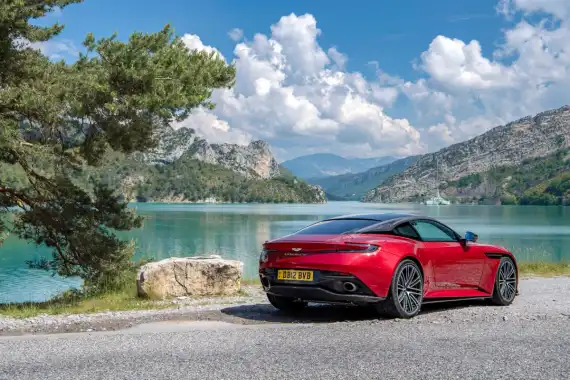
Handling & Performance
Performance is brain-searing when you want it to be but civilised at lower speeds. The DB12's engine is sublime - a 4.0-litre twin-turbo producing 680PS, which, compared with the DB11, is nearly 180PS more than the V8 and over 40PS more than the now-cancelled V12. If you didn't know, Aston's engines are powered by Mercedes-AMG via an eight-speed auto transmission. But this new V8 has more of Aston Martin's stamp on it - something that wasn't the case previously.
Zero to 62mph takes 3.6 seconds, and the top speed is 202mph. The more commanding powertrain is the result of a wave of subtle but significant changes, including altered cam profiles, optimised compression ratios, and larger-diameter turbochargers.
The vehicle is covered in sensors, including a six-axis inertia measurement unit. In simple terms, this technology can give ultra-accurate real-time readings of what the car is doing. It also forecasts the amount of grip on offer and adjusts itself to make the most of traction – which is always confidence-inspiring.
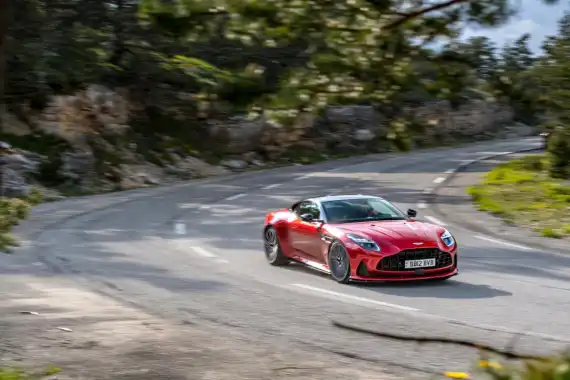
Space & Practicality
The Aston Martin is a 2+2 coupe - meaning, yes, it can technically fit four human beings within it - but it's really only meant for two - the driver and the passenger in the front seat.
I tested the DB12's space and practicality by offering my children a lift to school. One was squished in the back, and the front-seat kid was pushed almost against the dashboard to fit the other's knees behind her. It was not a lengthy ride, but the whining about how uncomfortable my child was in the back made it my last three-up trip.
Most people will use the back seats as a second storage compartment because the DB12's boot, although suitable for shopping bags, golf clubs, or carry-on flight luggage, is not deep.
Anyway, let’s have a closer look inside. Elevated by an all-new, hyper-luxurious cabin, the DB12 swanks modern luxury. Mixing pure, contemporary design with traditional craftsmanship and the best materials, the DB12's interior is an elegant retreat - as long as it's just you and one front-seat passenger. But that's how it should be because the Aston Martin has a very driver-focused cockpit.
You are seated below the shoulder line with a raised centre console, allowing complete interaction with the cockpit and its combination of modern display screens and interactive analogue switches. Driver-oriented controls are ergonomically arranged along the cabin centreline, delivering optimum connection. The dramatic, horizontal lines are tempered with elegant cabin jewellery and distinctive trim details.
Clothed in sweet-smelling, hand-stitched Bridge of Weir hides, this reassuring space is the essence of true Super Tourer values: soothing comfort to reign supreme over all-day, long-distance driving. I drove from the Midlands to Norfolk and back - which seemed like a drive across the continent, to be fair – and felt comfortable all day. There is a lot of legroom in the driver’s footwell – and my co-pilot, i.e. my son, who is the same height as me – just under six feet tall – had oodles of space, too. There is no elbow bumping – and headroom up in the front is good, too. There are also areas to keep bottles or coffee cups and slim door pockets to store sunglasses and the like. The glove compartment is a good size as well.
Ownership

Running Costs
It is important to approach this stunning machine with sensible expectations, especially regarding running expenses. Being a true sports car, the DB12 is not designed to be the most economical whip on the market. Regardless of how conservatively you drive it, it will never become a thrifty runabout or a tax-efficient vehicle. Its fuel tank is 78 litres, and you can expect a range of more than 300 miles.
Deep pockets are the order of the day if you intend to cover such distances regularly. You see, fuel economy is not the DB12's concern. It returns barely over 23mpg and emits a considerable 276g of CO2 per kilometre.
Therefore, while you might revel in the unadulterated excitement of driving it, you should be prepared for the cost factor that comes with it. Maintenance is another consideration. Aston Martin recommends servicing annually or every 10,000 miles, which can cost up to £1,000.
The DB12 comes with a three-year warranty as standard, which can be extended further.
Verdict
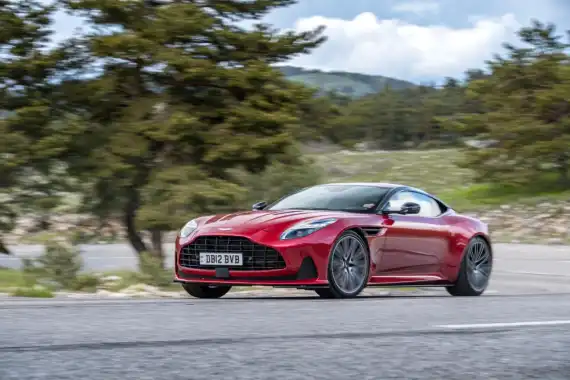
The DB12 is not just a sports car but a fusion of luxury and performance that releases the spirit of British craftsmanship. If you like the feel of a powerful engine and appreciate good looks, the model is close to the ultimate in driving perfection.
In other words, the Aston Martin is ideal for car enthusiasts who want to own a vehicle that gets attention on the road and offers an exhilarating experience.
So, if you have a cunning plan to invest in a car that will turn heads and give you an adrenaline rush, the DB12 will, in all likelihood, be your dream vehicle. Be prepared to pay for the awesomeness that it delivers, however.

